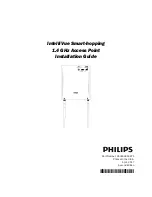
Page 9 of 130
Figure 2: DTMF dialing
1.1 Transmission Lines
The signal between your telephone, the Central Office, and the person you are calling, flows along a
transmission line of some kind. A transmission line is any medium over which the signal can flow. This could
be copper wiring, such as twisted Pair (TP) or Coaxial cable (COAX). It could be fiber optic cable or even
wireless. We will focus mainly on copper wiring and you will generally be dealing with one or more pairs of
copper wire. COAX is used by CATV companies to transmit their service to their customers. 2 conductor
makes 1 pair. 1 pair of wire is the transmission pathway for your dial tone service.
Types of Cable
There are different types of cables. In general, all cables serve to complete a circuit so that a signal may flow.
However, each cable type has certain characteristics that make it more or less suitable for a given application.
Twisted Pair (TP) cable is widely used in data and telecommunication installations.
PRO – TP is light-weight, easy to work with, relatively inexpensive and is capable of
supporting high-capacity data networks over relatively short distances.
CON – TP is quite susceptibility to interference (although the twists in the cable help
alleviate this to some extent) and external monitoring, making it unsuitable in high security
environments.
Signal from Central Office
We require 2 things to happen before the signal can deliver to the Central Office.
The device at the CO that receives the tones is call the Switch, Line Equipment (LE), or Office
Equipment (OE). The term changes by area.
The common types of switches you would find in a CO would be DMS 100 developed by
Nortel, 5ESS developed by Lucent and The GTD-5 EAX developed by GTE Automatic Electric
Laboratories.
Nortel DMS 100
DMS-100 Switch (Digital Multiplex System).
It was designed during the 1970's and released in 1979 and can control 100,000 telephone
lines.
To provide local service and connections to the PSTN public telephone network.
It is designed to deliver services over subscribers' telephone lines and trunks.










































